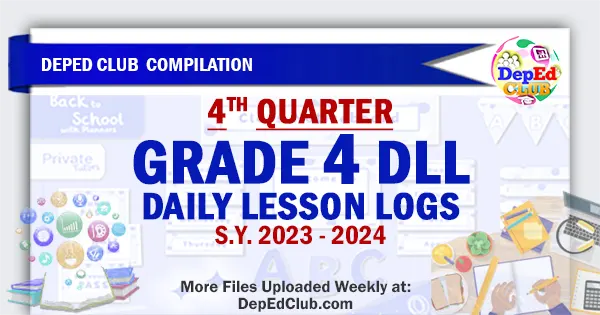To help teachers adapt to meet the demands of the modern learning environment, ensuring the continued growth and success of students, we are constantly uploading our ready-made Week 4 – Quarter 4 Grade 4 Daily Lesson Log | April 22 – 26, 2024, 2024 DLL. Our long-term goal is to consistently update and publish our ready-made weekly Grade 4 Daily Lesson Logs. Just visit this page regularly for the latest uploads.
We are grateful to all of our Contributors, File Editors and Tech Volunteers who worked sacrificially and without hesitation to manage the content of our website and social media accounts. Thank you to everyone for your continued support.
Blended Learning
Teachers have long employed diverse methods and resources to aid learners in achieving their goals. Traditionally, this involved face-to-face lectures, visual aids, written tests and group projects. However, with the advent of mobile technologies and collaborative web tools, the landscape of learning has expanded significantly.
Blended learning, essentially a fusion of these traditional and modern approaches has become increasingly prevalent. For some teachers, it simply mirrors the methods they’ve already employed successfully: utilizing various resources to cater to individualized, student-centered learning experiences. What sets today’s blended learning apart is the unprecedented access to the internet offering a wealth of information and fostering connectivity among students and teachers.
Yet for others, embracing blended learning poses a challenge. They may feel uneasy with the technologies their students use daily or uncertain about the potential benefits these tools can offer. Definitions of blended learning vary, ranging from broad interpretations encompassing any integration of ICTs to more specific models balancing online and face-to-face instruction.
However, amidst the ambiguity, one thing is clear: blended learning merges diverse teaching and learning methods, incorporating both traditional classroom settings and online platforms. This integration proves highly effective in meeting the demands of 21st-century learners while tackling resource constraints and catering to diverse student needs.
Despite its growing prevalence, the term “blended learning” itself has sparked debate. Some argue it’s redundant merely describing the common practice of blending traditional methods with technology. Nevertheless, it remains a fluid concept evolving alongside emerging technologies and educational practices.
Blended learning entails a strategic integration of student-centered, traditional classroom learning with flexible online methodologies. Its benefits extend beyond the classroom, offering cost advantages, increased access to education and flexibility in workforce deployment.
In a world where learning is recognized as a continuous journey, blending various learning mediums provides distinct advantages over relying solely on traditional or online approaches. As education evolves, so too does the concept of blended learning, adapting to meet the needs of learners in a rapidly changing world.

